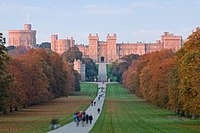Datei:Bacino di San Marco nel giorno dell'Ascensione.jpg

Originaldatei (2.000 × 1.199 Pixel, Dateigröße: 488 KB, MIME-Typ: image/jpeg)
Diese Datei stammt aus Wikimedia Commons und kann von anderen Projekten verwendet werden. Die Beschreibung von deren Dateibeschreibungsseite wird unten angezeigt.
Beschreibung
| Giovanni Antonio Canal: Venedig: Bacino di S. Marco am Himmelfahrtstag
|
||||||||||||||||||||||||||||||
|---|---|---|---|---|---|---|---|---|---|---|---|---|---|---|---|---|---|---|---|---|---|---|---|---|---|---|---|---|---|---|
| Künstler |
|
|||||||||||||||||||||||||||||
| Titel |
Venedig: Bacino di S. Marco am Himmelfahrtstag label QS:Lit,"Venezia: Bacino di San Marco bel giorno dell'Ascensione"
label QS:Lfr,"Venise: le bacino di San Marco le jour de l'Ascension"
label QS:Lde,"Venedig: Bacino di S. Marco am Himmelfahrtstag"
label QS:Lnl,"Venetië: Bacino di San Marco aan hemelvaartsdag" |
|||||||||||||||||||||||||||||
| Objektart |
Gemälde |
|||||||||||||||||||||||||||||
| Genre |
Vedute |
|||||||||||||||||||||||||||||
| Beschreibung |
English: Bucintoro after the ceremony for the Sposalizio del Mar, the Wedding of the Sea, held on Ascension Day and thus otherwise known as the Festa della Sensa. Venice’s principal annual ceremony was of uncertain origin: it commemorated, according to one tradition, the sailing on Ascension Day in the year 1000 of a war fleet to assert Venetian power along the Istrian coast; according to another, the gift of a ring by Pope Alexander III to Doge Sebastiano Ziani - the greatest of Venice’s medieval doges - to sanction Venice’s authority in the Adriatic, in gratitude for Ziani’s support for the Pope against the Holy Roman Emperor, Frederick Barbarossa (Pope and Emperor were reconciled in San Marco on Ascension Day 1177). The Bucintoro was rowed in procession out of the lagoon into the Adriatic, where the Doge cast a ring blessed by the Patriarch into the waters, symbolising the marriage of Venice to the sea. The Bucintoro depicted here was to be the last, constructed in 1728-9 and crowded with gilded wooden allegorical sculptures by Antonio Corradini. After the fall of Venice to Napoleon’s army in 1797, the upper part of the Bucintoro was burnt to recover the gold, after which the Austrians armed the hulk with cannon and placed it to guard the entrance to the lagoon. It was finally broken up in its birthplace, the Arsenale, in 1824. The view is taken from some way out in the Bacino, directly in front of the Zecca, the south façade of which is seen to the left together with the Libreria. Beyond is the Campanile, shortened to fit it into the painting (four small windows serving the staircase running up the shaft should be visible). In the Piazzetta is the marquee of the Ascension Day market, clearly regarded as an integral part of the festival. Beyond are the Torre dell’Orologio and the south flank of San Marco, with the western dome reduced in size and moved eastwards to be largely obscured by the Palazzo Ducale. To the right of the Palazzo Ducale (much diminished in width) are the Prigioni and Palazzo Dandolo (today the Hotel Danieli); moored to the left of the Bucintoro with its oars raised is the fusta, the Doge’s usual single-masted galleon. |
|||||||||||||||||||||||||||||
| Datum |
etwa 1733 bis 1734 date QS:P,+1733-00-00T00:00:00Z/8,P1319,+1733-00-00T00:00:00Z/9,P1326,+1734-00-00T00:00:00Z/9,P1480,Q5727902 |
|||||||||||||||||||||||||||||
| Technik |
Öl auf Leinwand |
|||||||||||||||||||||||||||||
| Maße |
Höhe: 76,8 cm dimensions QS:P2048,+76.8U174728 dimensions QS:P2049,+125.4U174728 |
|||||||||||||||||||||||||||||
| Sammlung |
institution QS:P195,Q1459037
|
|||||||||||||||||||||||||||||
| Inventarnummer |
RCIN 404417 (Royal Collection) |
|||||||||||||||||||||||||||||
| Provenienz | Joseph Smith from whom bought by Georg III. | |||||||||||||||||||||||||||||
| Ausstellungsgeschichte |
|
|||||||||||||||||||||||||||||
| Bemerkungen |
English: Canaletto probably first depicted the scene in a drawing of 1729, below, and the composition was painted many times by the artist and his followers. This version must have been painted at around the same time as its companion piece. This pair is much larger than the other twelve views on the Grand Canal, and were engraved as the final two plates of Visentini's Prospectus Magni Canalis Venetiarum (Venice, 1735), thus providing an uncontested date for completion. Visentini's engravings are based on Canaletto's series of Grand Canal views which were all at one time in the collection of Joseph Smith and are now in the Royal Collection. |
|||||||||||||||||||||||||||||
| Referenzen |
|
|||||||||||||||||||||||||||||
| Herkunft/Fotograf | istitutosuperioredadda.it = version Royal Collection | |||||||||||||||||||||||||||||
| Andere Versionen |
|
|||||||||||||||||||||||||||||
Ursprüngliches Datei-Logbuch
- 2005-10-25 02:16 Honbicot 1251×770× (200539 bytes) ''Return of the Bucentoro to the Molo on Ascension Day'' by [[Canaletto]], 1732. [[Royal Collection]], [[Windsor Castle|Windsor]].'
Lizenz
|
Dies ist eine originalgetreue fotografische Reproduktion eines zweidimensionalen Kunstwerks. Das Kunstwerk an sich ist aus dem folgenden Grund gemeinfrei:
Nach offizieller Ansicht der Wikimedia Foundation sind originalgetreue Reproduktionen zweidimensionaler gemeinfreier Werke gemeinfrei. Diese fotografische Reproduktion wird daher auch als gemeinfrei in den Vereinigten Staaten angesehen. Die Verwendung dieser Werke kann in anderen Rechtssystemen verboten oder nur eingeschränkt erlaubt sein. Zu Details siehe Reuse of PD-Art photographs.
| |||||
Kurzbeschreibungen
In dieser Datei abgebildete Objekte
Motiv
image/jpeg
d5509eee5774a02173eb10c600acdc17434d3aeb
499.332 Byte
1.199 Pixel
2.000 Pixel
Dateiversionen
Klicke auf einen Zeitpunkt, um diese Version zu laden.
| Version vom | Vorschaubild | Maße | Benutzer | Kommentar | |
|---|---|---|---|---|---|
| aktuell | 20:02, 18. Apr. 2015 |  | 2.000 × 1.199 (488 KB) | wikimediacommons>Арриги Джузеппе | {{Information |Description ={{it|1=bacino di San Marco nel giorno dell'Ascensione}} |Source =http://www.istitutosuperioredadda.it/joomla/materiale_didattico/Minonzio/CANALETTO/07%20ritorno%20del%20bucintoro.jpg |Author ={{Creator:Gio... |
Dateiverwendung
Die folgende Seite verwendet diese Datei:
Metadaten
Diese Datei enthält weitere Informationen, die in der Regel von der Digitalkamera oder dem verwendeten Scanner stammen. Durch nachträgliche Bearbeitung der Originaldatei können einige Details verändert worden sein.
| Fotograf | THE ROYAL COLLECTION |
|---|---|
| Urheberrechte | The Royal Collection © Her Majesty Queen Elizabeth II |
| Code des Standorts, von dem das Foto übermittelt wurde | p-tYmIy2gD5--z3Y8tM9 |







